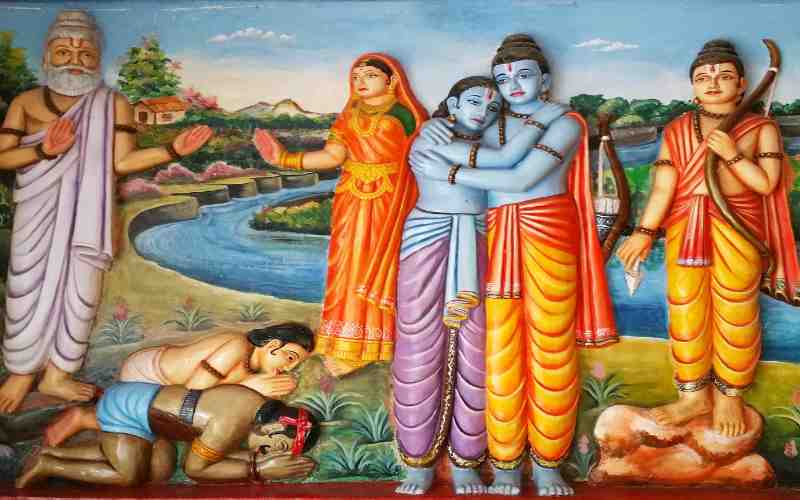The Niralamba Upanishad is one of the lesser-known but highly profound texts in the realm of Indian philosophy. It belongs to the class of Upanishads, which are ancient Sanskrit texts that form the basis of Hindu spiritual knowledge. What sets the Niralamba Upanishad apart is its concise yet comprehensive exploration of 29 terms that are central to understanding the nature of reality, the self, and the ultimate truth. In this blog, we will delve into the meaning and significance of these 29 terms and how they contribute to the spiritual wisdom of this Upanishad.
- Nir – The term ‘Nir’ means ‘without’ or ‘devoid of.’ It signifies the state of transcendence, where one goes beyond all limitations and dualities.
- A – This simple letter ‘A’ represents the Supreme Reality, often identified with Brahman, the ultimate source of all existence.
- Lamba – ‘Lamba’ refers to the support or foundation of all things. It suggests that the Supreme Reality is the substratum on which everything else depends.
- Niralamba – The combination of ‘Nir’ and ‘Lamba’ implies that the true essence of reality is self-sufficient and doesn’t depend on anything else for its existence.
- Akshara – This term means imperishable or indestructible. It points to the eternal nature of the Supreme Reality.
- Akara – ‘Akara’ signifies the letter ‘A,’ which symbolizes the beginning of all things. It represents the creative aspect of the Supreme Reality.
- Vishwakara – ‘Vishwakara’ denotes the letter ‘V’ and represents the manifested world, indicating that the Supreme Reality is the source of the entire universe.
- Mahakara – Here, ‘Mahakara’ refers to the letter ‘M,’ symbolizing the state of deep sleep or dissolution, where everything returns to its source.
- Nirakara – ‘Nirakara’ means formless. It suggests that the Supreme Reality is beyond all forms and attributes.
- Sakara – This term implies ‘with form’ or ‘having attributes.’ It acknowledges that the Supreme Reality can manifest with attributes for the sake of creation.
- Nirvikara – ‘Nirvikara’ signifies the unchanging nature of the Supreme Reality, which remains unaffected by any modifications in the world.
- Svikara – ‘Svikara’ represents acceptance or acknowledgment. It implies that the world is a manifestation of the Supreme Reality and should be accepted as such.
- Anu – ‘Anu’ means atomic or subtle. It highlights the infinitesimal nature of the individual self, which is a microcosm of the macrocosmic Supreme Reality.
- Vyapti – ‘Vyapti’ signifies pervasion. It suggests that the Supreme Reality pervades everything in existence, like space filling all things.
- Nirvyapti – The negation of ‘Vyapti,’ ‘Nirvyapti’ implies that the Supreme Reality is not limited by pervasion and transcends all boundaries.
- Sat – ‘Sat’ refers to the truth or reality. It signifies the unchanging and eternal nature of the Supreme Reality.
- Asat – ‘Asat’ means non-reality or illusion. It represents the transient and illusory nature of the material world.
- Paramatman – ‘Paramatman’ is the supreme self or the ultimate reality within each individual. It is the innermost essence of every being.
- Jivatman – ‘Jivatman’ is the individual self or the soul. It is the embodied self that experiences the world through the senses.
- Brahman – ‘Brahman’ is the absolute reality, often equated with the Supreme Being or the ultimate truth in Hindu philosophy.
- Avidya – ‘Avidya’ represents ignorance or spiritual blindness. It is the state of being unaware of the true nature of reality.
- Vidya – ‘Vidya’ is knowledge or wisdom. It signifies the realization of the true nature of the self and the Supreme Reality.
- Maya – ‘Maya’ is the cosmic illusion that veils the true reality of the world. It creates the appearance of duality and separateness.
- Sarvam – ‘Sarvam’ means everything or all. It emphasizes the idea that everything in the universe is interconnected and part of the Supreme Reality.
- Nir – This is a repetition of the first term, ‘Nir,’ to emphasize the state of transcendence and absolute detachment.
- Nirantara – ‘Nirantara’ signifies the uninterrupted and eternal nature of the Supreme Reality.
- Niranjanam – ‘Niranjanam’ means without blemish or purity. It suggests that the Supreme Reality is inherently pure and untainted.
- Nirvikalpam – ‘Nirvikalpam’ represents the state of non-duality, where there are no distinctions or divisions between the self and the Supreme Reality.
- Niranjaram – ‘Niranjaram’ implies the state of absolute liberation, where one is free from all attachments and entanglements of the material world.
In conclusion, the Niralamba Upanishad offers profound insights into the nature of reality, the self, and the ultimate truth through these 29 terms. Each term is a doorway to deeper understanding, inviting seekers to contemplate the timeless wisdom of the Upanishadic teachings. By exploring these terms and their significance, individuals can embark on a spiritual journey towards realizing their oneness with the Supreme Reality and transcending the illusions of the material world.





